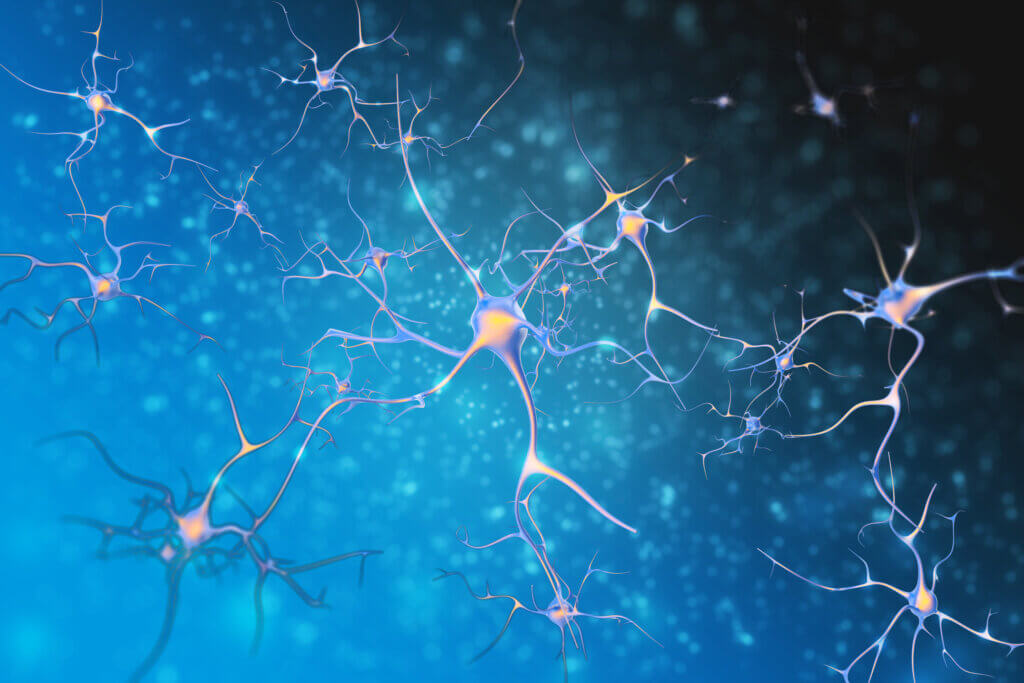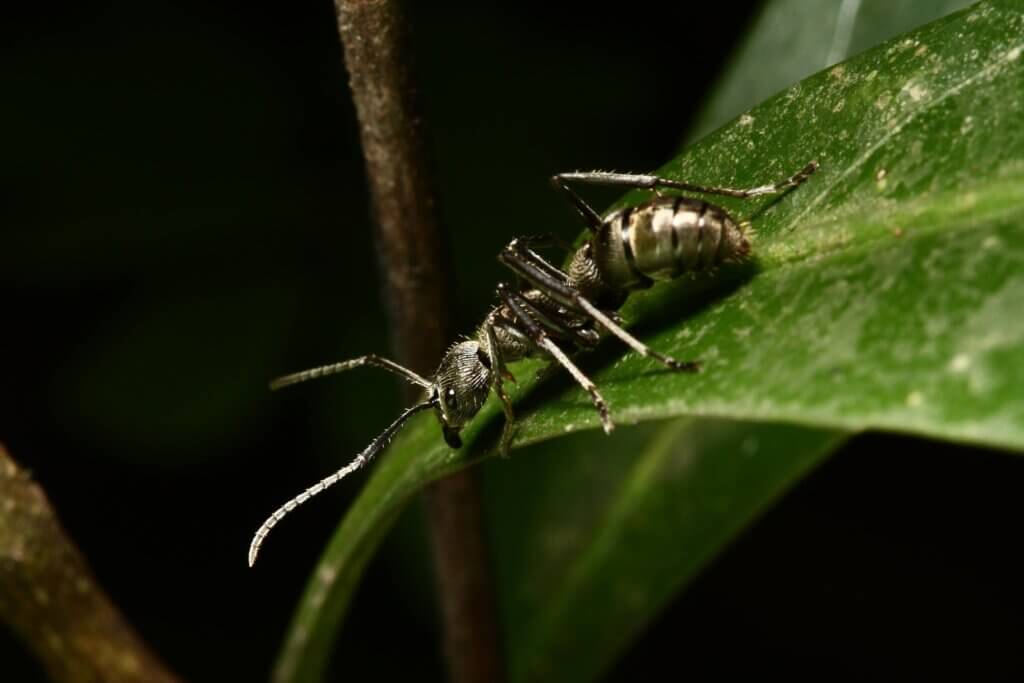Why Our Ancestors Had Bigger Brains

The human brain continues to be the subject of great fascination among scientists. Many things regarding it remain an enigma, such as consciousness, and others are reinterpreted based on current findings. Today we’ll show you why our ancestors had bigger brains, according to new studies on the matter.
Evolution and size of the brain in the first humans
According to the researchers, three characteristics define the brains of early monkey and ape ancestors:
- The human brain has increased in size significantly. Especially, it has done so in the percentage of neocortex (it came to constitute 80% of the human brain).
- Some sections of the neocortex have been significantly enlarged relative to others, most notably the prefrontal, insular, posterior parietal, and temporal cortices (these are known to continue to develop postnatally).
- The fundamental functional divisions of the cortex increased considerably with the evolution of human brains (early mammals had about 20 cortical areas, whereas modern humans are estimated to have about 200 areas).
The first bipedal ancestors of man diverged from the ape ancestors of chimpanzees and bonobos (the closest living relatives) about 6 million years ago.
In the last 2 million years the brain of bipedal ancestors has evolved from 400/600 cubic centimeters to about 1,200/1,600 cubic centimeters (the latter being the range of modern humans). The increase was related to the metabolic cost of obtaining food and other variables.
What could have influenced the changes?

Certainly, obtaining higher quality food and processing techniques to improve digestion (such as cooking, for example) stimulated the brain growth of our ancestors. As has been suggested, there is a positive correlation between brain weight and the maximum lifespan of the species. Therefore, its growth could also give them longer lives.
Experts currently estimate that the human brain is made up of about 100 billion neurons, more than 100,000 kilometers of interconnections, and has a storage capacity of 1.25 × 10 12 bytes.
Its evolution was gradual, and, as is to be expected, it adapted to the circumstances of the moment, something that must be taken into account when analyzing the brain of the ancestors and that of the modern human.
Why did our ancestors have bigger brains?
Apart from the progressive growth that has been explained in the previous sections, we know that the human brain has contracted significantly in the last thousands of years. A study published in Frontiers in Ecology and Evolution in 2021 claims that the reduction occurred as little as 3,000 years ago. This contrasts with earlier estimates that dated the change to around 30,000 years ago.
The researchers in the cited paper don’t agree with the hypothesis that the recent reduction in brain size is a by-product of a reduction in body size, as a result of a change to an agricultural diet or as a consequence of self-domestication. Those hypotheses were based on information that had been considered so far or those that had greater support from the community.
On the contrary, they point out that it was the result of the processes of externalization of knowledge and the benefits of decision-making within a group.
The latter, in part, was a consequence of the consolidation of social systems of distributed cognition and, of course, the storage and exchange of information. Specifically, the emergence of what is known as collective intelligence is responsible for its reduction.
The ant brain: An excellent point of comparison

To test this hypothesis surrounding bigger brains in our ancestors, the experts analyzed the evolution of ant brains. While it’s true that humans and ants evolved along different pathways in social and cognitive evolution, they still share many common traits. For example, the predilection for large group communities, agrarian life behaviors, division of labor, and collective cognition.
Ants that manifested all of these characteristics developed smaller brains compared to those that did not. The appearance of writing, the birth of civilizations, and the consolidation of agriculture could infer that the current human brain is much smaller than that of our ancestors.
Final thoughts
Note that brain size doesn’t translate into greater cognitive complexity. If so, elephants, whales, and other species would be more sophisticated than we are.
Therefore, the researchers note that neuroanatomical reorganization and changes at the molecular level, in conjunction with the absolute size of the brain and the total number of neurons, is what determines the degree of cognition.
Similarly, the human brain hasn’t stopped evolving; nor has that of other animal species. The present brain will differ from the human brain three thousand, five thousand, and ten thousand years in the future. It will do so to adapt to the circumstances of the moment, just as it has done throughout these last thousands of years.
The human brain continues to be the subject of great fascination among scientists. Many things regarding it remain an enigma, such as consciousness, and others are reinterpreted based on current findings. Today we’ll show you why our ancestors had bigger brains, according to new studies on the matter.
Evolution and size of the brain in the first humans
According to the researchers, three characteristics define the brains of early monkey and ape ancestors:
- The human brain has increased in size significantly. Especially, it has done so in the percentage of neocortex (it came to constitute 80% of the human brain).
- Some sections of the neocortex have been significantly enlarged relative to others, most notably the prefrontal, insular, posterior parietal, and temporal cortices (these are known to continue to develop postnatally).
- The fundamental functional divisions of the cortex increased considerably with the evolution of human brains (early mammals had about 20 cortical areas, whereas modern humans are estimated to have about 200 areas).
The first bipedal ancestors of man diverged from the ape ancestors of chimpanzees and bonobos (the closest living relatives) about 6 million years ago.
In the last 2 million years the brain of bipedal ancestors has evolved from 400/600 cubic centimeters to about 1,200/1,600 cubic centimeters (the latter being the range of modern humans). The increase was related to the metabolic cost of obtaining food and other variables.
What could have influenced the changes?

Certainly, obtaining higher quality food and processing techniques to improve digestion (such as cooking, for example) stimulated the brain growth of our ancestors. As has been suggested, there is a positive correlation between brain weight and the maximum lifespan of the species. Therefore, its growth could also give them longer lives.
Experts currently estimate that the human brain is made up of about 100 billion neurons, more than 100,000 kilometers of interconnections, and has a storage capacity of 1.25 × 10 12 bytes.
Its evolution was gradual, and, as is to be expected, it adapted to the circumstances of the moment, something that must be taken into account when analyzing the brain of the ancestors and that of the modern human.
Why did our ancestors have bigger brains?
Apart from the progressive growth that has been explained in the previous sections, we know that the human brain has contracted significantly in the last thousands of years. A study published in Frontiers in Ecology and Evolution in 2021 claims that the reduction occurred as little as 3,000 years ago. This contrasts with earlier estimates that dated the change to around 30,000 years ago.
The researchers in the cited paper don’t agree with the hypothesis that the recent reduction in brain size is a by-product of a reduction in body size, as a result of a change to an agricultural diet or as a consequence of self-domestication. Those hypotheses were based on information that had been considered so far or those that had greater support from the community.
On the contrary, they point out that it was the result of the processes of externalization of knowledge and the benefits of decision-making within a group.
The latter, in part, was a consequence of the consolidation of social systems of distributed cognition and, of course, the storage and exchange of information. Specifically, the emergence of what is known as collective intelligence is responsible for its reduction.
The ant brain: An excellent point of comparison

To test this hypothesis surrounding bigger brains in our ancestors, the experts analyzed the evolution of ant brains. While it’s true that humans and ants evolved along different pathways in social and cognitive evolution, they still share many common traits. For example, the predilection for large group communities, agrarian life behaviors, division of labor, and collective cognition.
Ants that manifested all of these characteristics developed smaller brains compared to those that did not. The appearance of writing, the birth of civilizations, and the consolidation of agriculture could infer that the current human brain is much smaller than that of our ancestors.
Final thoughts
Note that brain size doesn’t translate into greater cognitive complexity. If so, elephants, whales, and other species would be more sophisticated than we are.
Therefore, the researchers note that neuroanatomical reorganization and changes at the molecular level, in conjunction with the absolute size of the brain and the total number of neurons, is what determines the degree of cognition.
Similarly, the human brain hasn’t stopped evolving; nor has that of other animal species. The present brain will differ from the human brain three thousand, five thousand, and ten thousand years in the future. It will do so to adapt to the circumstances of the moment, just as it has done throughout these last thousands of years.
- Allman J, McLaughlin T, Hakeem A. Brain weight and life-span in primate species. Proc Natl Acad Sci U S A. 1993 Jan 1;90(1):118-22.
- DeSilva, J. M., Traniello, J. F., Claxton, A. G., & Fannin, L. D. When and why did human brains decrease in size? A new change-point analysis and insights from brain evolution in ants. Frontiers in Ecology and Evolution. 2021; 712.
- Hill J, Inder T, Neil J, Dierker D, Harwell J, Van Essen D. Similar patterns of cortical expansion during human development and evolution. Proc Natl Acad Sci U S A. 2010 Jul 20;107(29):13135-40.
- Hofman MA. Evolution of the human brain: when bigger is better. Front Neuroanat. 2014 Mar 27;8:15.
- Kaas JH. The evolution of brains from early mammals to humans. Wiley Interdiscip Rev Cogn Sci. 2013 Jan;4(1):33-45.
- Verendeev A, Sherwood CC. HUMAN BRAIN EVOLUTION. Curr Opin Behav Sci. 2017 Aug;16:41-45.
Este texto se ofrece únicamente con propósitos informativos y no reemplaza la consulta con un profesional. Ante dudas, consulta a tu especialista.







